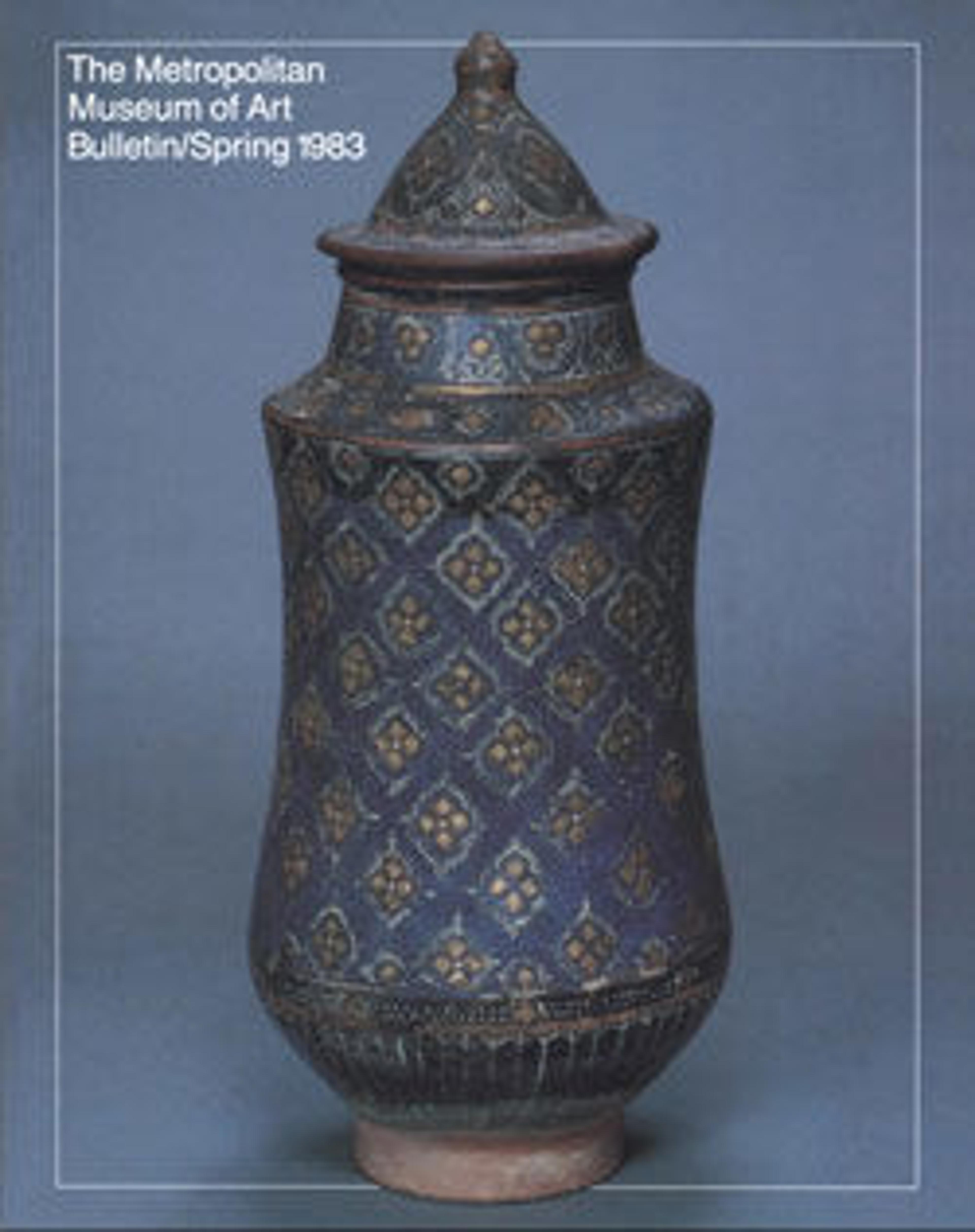Water Pipe Base
The technique of frit-carving was popular in the 12th century and experienced a revival in the 17th century. This involved covering the entire vessel in a thick layer of frit (in this case, blue), carving through to the white composite body, and finally covering the ware in a transparent glaze.
The blue frit on this water pipe base (qalian), is reminiscent of the color on a type made in the kilns of Iznik, Ottoman Turkey. The serrated saz-shaped leaf forms also bear reference to Ottoman forms, while the lotus-flower leaves are traditionally Chinese. The metal attachments to this kalian are later additions, added in order to protect the vulnerable projecting segments.
The blue frit on this water pipe base (qalian), is reminiscent of the color on a type made in the kilns of Iznik, Ottoman Turkey. The serrated saz-shaped leaf forms also bear reference to Ottoman forms, while the lotus-flower leaves are traditionally Chinese. The metal attachments to this kalian are later additions, added in order to protect the vulnerable projecting segments.
Artwork Details
- Title: Water Pipe Base
- Date: 17th century
- Geography: Made in Iran, Kirman
- Medium: Stonepaste; painted in blue and incised under colorless glaze with copper fittings
- Dimensions: H. 8 3/4 in. (22.2 cm)
Diam. 7 in. (17.8 cm) - Classification: Ceramics
- Credit Line: Fletcher Fund, 1975
- Object Number: 1975.61.3
- Curatorial Department: Islamic Art
More Artwork
Research Resources
The Met provides unparalleled resources for research and welcomes an international community of students and scholars. The Met's Open Access API is where creators and researchers can connect to the The Met collection. Open Access data and public domain images are available for unrestricted commercial and noncommercial use without permission or fee.
To request images under copyright and other restrictions, please use this Image Request form.
Feedback
We continue to research and examine historical and cultural context for objects in The Met collection. If you have comments or questions about this object record, please contact us using the form below. The Museum looks forward to receiving your comments.
